

Distillery in Focus: Glenglassaugh
Region: Highlands
Name: Glenglassaugh ("Valley of the grey-green place").
Status: Active
Website: http://www.glenglassaugh.com
Telephone: +44 (0)1261 842367
E-Mail: info@glenglassaugh.com
Address: Glenglassaugh Distillery, Portsoy, Aberdeenshire, AB45 2SQ, 57° 40′ 40″ N, 2° 44′ 14″ W
Visitor centre: Yes, since 2012
Owner: The BenRiach Distillery Company Ltd
Established in 1875
Technical details:
Water source: Glassaugh spring (production), cooling water from the Glassaugh river
Malted barley: Optic or optic/oxbridge. Unpeated with a small production using peated malt (30 ppm).
Malt bins: n.a.
Mill: Porteus (1930s)
Mash tun: Traditional mash tun with stirring gear from 1960. Mash charge: 5 tonnes.
Washbacks: 6: 4 made of wood (Douglas Fir) and 2 made of stainless steel (no in use) of approximately 26,500 L capacity..
Yeast: Pressed distillers yeast.
Fermentation: 60-90 hours
Stills: 1 wash (17,184 L) and 1 spirit still (12,729 L).
Warehouses: 4 traditionnal and 1 dunnage warehouses holding about 4,500 casks of Glenglassaugh (total capacity about 40,000 casks).
Production capacity: 1 mio LPA. Current production: circa 200,000 LPA
Employees: n.a.
Casks used for maturation: refill bourbon, sherry and ex-wine casks of different sizes (from Octave to butts).
Percentage for single malts: n.a.
Contribute(d) to the following blends: Cutty Sark, Famouse Grouse, Lang's.
Additional details can be found here: http://www.glenglassaugh.com/pdf/SummaryQA.pdf
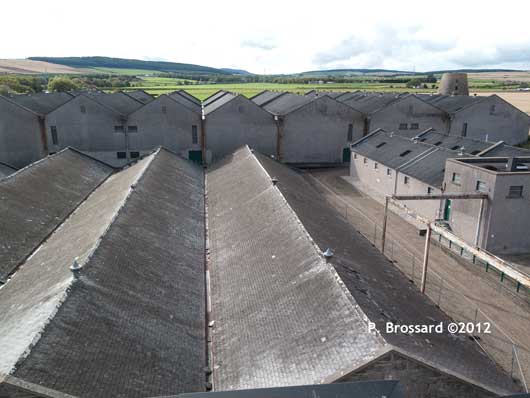 |
View of the warehouses from the roof of the distillery still house |
Regular Bottling:
Glenglassaugh 26 YO, OB, 46%
Glenglassaugh over 30 YO, variable abv
Glenglassaugh over 40 YO, variable abv
Other bottlings:
Glenglassaugh Revival, Glenglassaugh evolution, Glenglassaugh the Massandra Collection, The Chosen Few, The Manager's legacy and other limited editions over the las few years.
For the tasted whiskies, click here
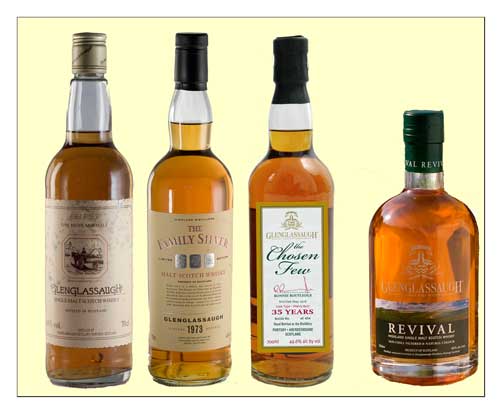 |
| Several of the official Mortlach (from left to right): The old official Glenglassaugh (no age specified), the Family Silver of 1973, the Chosen Few Ronnie Routledge and the Revival |
History of the Glenglassaugh Distillery
Glenglassaugh distillery history
The distillery was founded in 1875 by James Moir, a successful business man of Portsoy, active in wine & spirit trade, manure, banking, gas and other diverse activities. Shortly before its opening, it was reported in the Portsoy Advertiser that “The Glenglassaugh will be the real “peat reek”, as peats are largely used fro drying the malt. The cost of the distillery was some £10,000. Over the years Robertson & Baxter, the Glasgow Wine & Spirit wholesaler, became their most important customer.
After the death of Colonel James Moir in 1887, the distillery passed into the hands of his niece Margaret and her husband Alexander Morrison. Alexander Morrison decided to re-equip and expand the distillery.
At the time of Barnard’s visit in 1887, there were 5 washbacks of 4,500 gallons. The still house was fitted up with all the latest improvement and contained a wash still of 4000 gallons and a spirit still of 2000 gallons. The distillery covered 17 acres in addition to a farm of 80 acres. The annual output was 80,000 gallons.
Further improvements were made in 1889 and 1892. For family reasons, Alexander Morrison decided to sell his business to Robertson & Baxter in September 1892 for £10,000. Robertson & Baxter purchased the distillery for Highland Distilleries, which had been incorporated in 1887. Robertson & Baxter sold the distillery to Highland Distilleries in November 1892 at the price of £15,000. After some improvements, the output of the distillery rose to over 110,000 gallons in 1898 and the yield progressively increased from 210 LPA/tonne to 286 LPA from 1902 to 1907. Following a decrease in Scotch consummation, production declined thereafter with the distillery closed in 1908 according to the Highland Distilleries archives. Some production took place between 1931 and 1936. During the Second World War, the Army used the distillery.
With the demand increasing in the late 1950s, Highland Distilleries decided to reopen the distillery. After 50 years of silence, the small and old-fashioned distillery was razed to the ground, with the exception of the old maltings and a few other buildings. The new distillery re-opened in 1960 and further buildings were erected in 1961 and 1963. The refurbishment costs were estimated at £100,000. The new distillery contained one pair of still and the capacity was 1 mio LPA. In 1970, Highland Distilleries acquired the firm Matthew Gloag & Sons Ltd, owner of the Famous Grouse brand and entered a joined venture with R&B. The output went mainly into the Famous Grouse, Cutty Sark and J&B blends. Glenglassaugh was a rather heavy whisky of the “Highland” style and their owners were in needed of a lighter Speyside style for their blends. They believed that the hard water of the Glenglassaugh source was the reason and a water softening plant was installed in 1974. This was unsuccessful, as other attempts (e.g., change in cut points and replacing the tulip-bulb stills by stills of the Glenrothes style). By 1980, when Glenrothes reconstruction took place, the whisky industry was in overproduction and resulted in a whisky loch (whisky lake) that leads to the closure of many distilleries. The company was a victim of this recession and the owners decided to close the distillery in 1986, with the last cask filled on the 3rd December 1986.
The Scaent group (involved mainly in the energy business) acquired the distillery from Edrington (former Highland Distilleries) in 2008. The distillery was officially reopened in November 2008 by Alex Salmond, First Minister of Scotland. The distillery was acquired on the 22nd March 2013 by the The BenRiach Distillery Company Ltd.
Source: The Scotch whisky industry record by H. Charles Craig,, The Scotch Whisky Distilleries by Misako Udo, The Making of Scotch whisky by John R. Hume & Michael S. Moss, Glenglassaugh: A Distillery Reborn, Ian Buxton, distillery visit.
www.whisky-news.com/Patrick Brossard © 09 September 2012. Last update: 22 March 2013
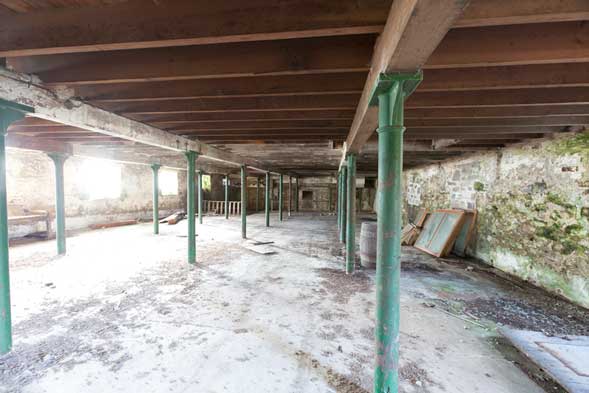 |
| The old floor maltings at Glenglassaugh (whisky-news.com©2012) |
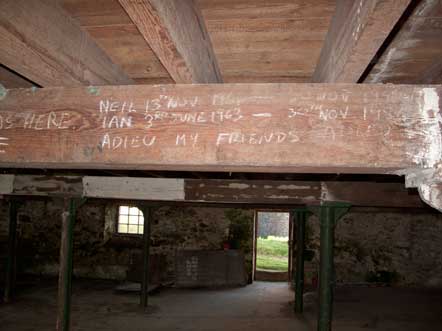 |
| and some farewell messages "Adieu" left by the employees at the closure of the distillery in 1986. |
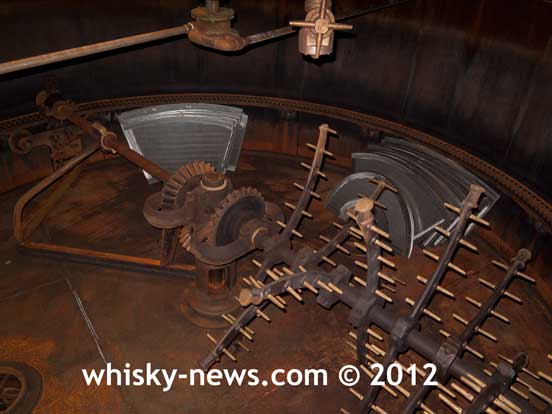 |
| The traditionnal mash tun |
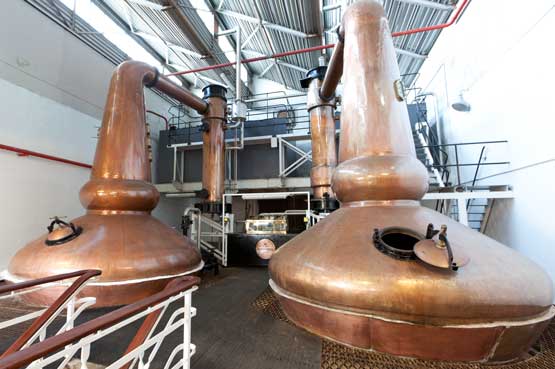 |
| The Still house |
Official/original bottlings (OB) Age Glenglassaugh 19 YO last year of distillation, OB, 40%, B: 2006 Rating: 09/20 Glenglassaugh 21 YO, OB, 46%, B: 2009 Rating: 14/20 Glenglassaugh 30 YO, OB, 43.0%, B: 2009 Rating: 19/20 Glenglassaugh 40 YO, OB, 44.8%, B:2009 Rating: 17/20 Glenglassaugh 40 YO,OB, 42.5%, B:2014 Rating: 16/20 Vintages Glenglassaugh 1973 The Massandra Collection Aleatico finish, 39 YO, OB, 50.7%, B: 2012, 341 b. Rating: 16/20 Glenglassaugh Manager’s Legacy 1 “Jim Cryle” 1974, OB, 52.9% B: 2010. 200 b. Rating: 17/20 Glenglassaugh 1978 The Massandra Collection Madeira style finish, 33 YO, OB, 44.8%, B: 2012, 437 b. Rating: 15/20 Glenglassaugh 1978 Madeira Wood Finish, 35 YO, OB, 41.7%, B:2014. Rating: 17/20 Glenglassaugh 1983 Master Distiller’s select Sherry, OB, 49.8%, B: 2011. 390 b. Rating: 15/20 No Age Specified (NAS) Glenglassaugh Revival, OB, 46%, B: 2012 Rating: 09/20 Glenglassaugh Evolution, OB, 57.2%, B: 2012 Rating: 09/20 Glenglassaugh Torfa, OB, 50%, B:2015 Rating: 09/20
Independent bottlings (IB) and anonymous Glenglassaugh Berry Bros & Rudd Glenglassaugh 1983, Berry Bros & Rudd, 46%, B: 2007 Rating: 13/20 Dewar Rattray Glenglassaugh 1986 Sherry, 21YO, Dewar Rattray, 53.4%, B: 2007, c.162, 399 b. Rating: 12/20 Murray McDavid (MMD) Glenglassaugh 1965 Sherry/Riversaltes, 40 YO, MMD, 47.8%, 411 b. Rating: 14/20 Glenglassaugh 1976, 30 YO, MMD, 45.5%, c.2381 Rating: 13/20 Glenglassaugh 1978 sherry/syrah Mission Gold, 28 YO, 46.6%, MMD, 500 b. Rating: 14/20